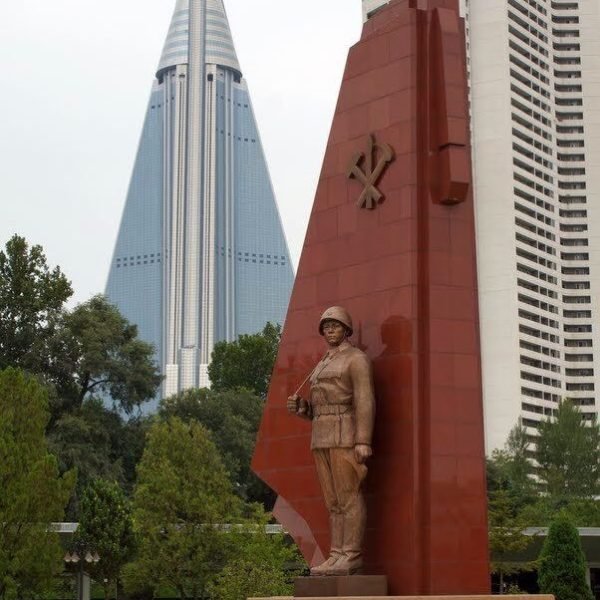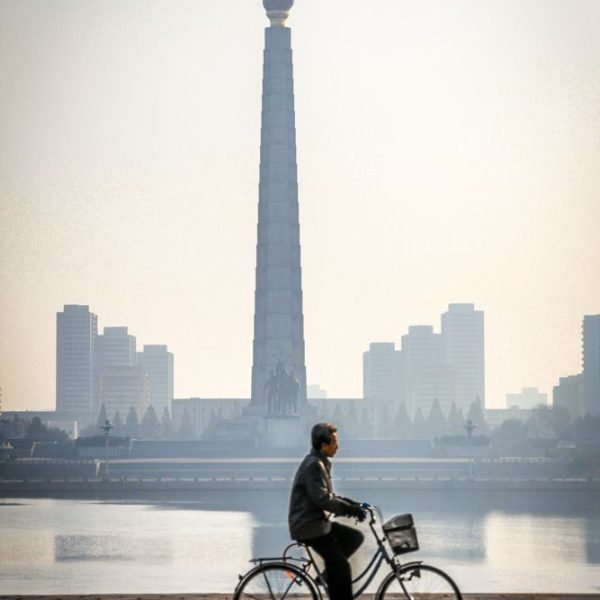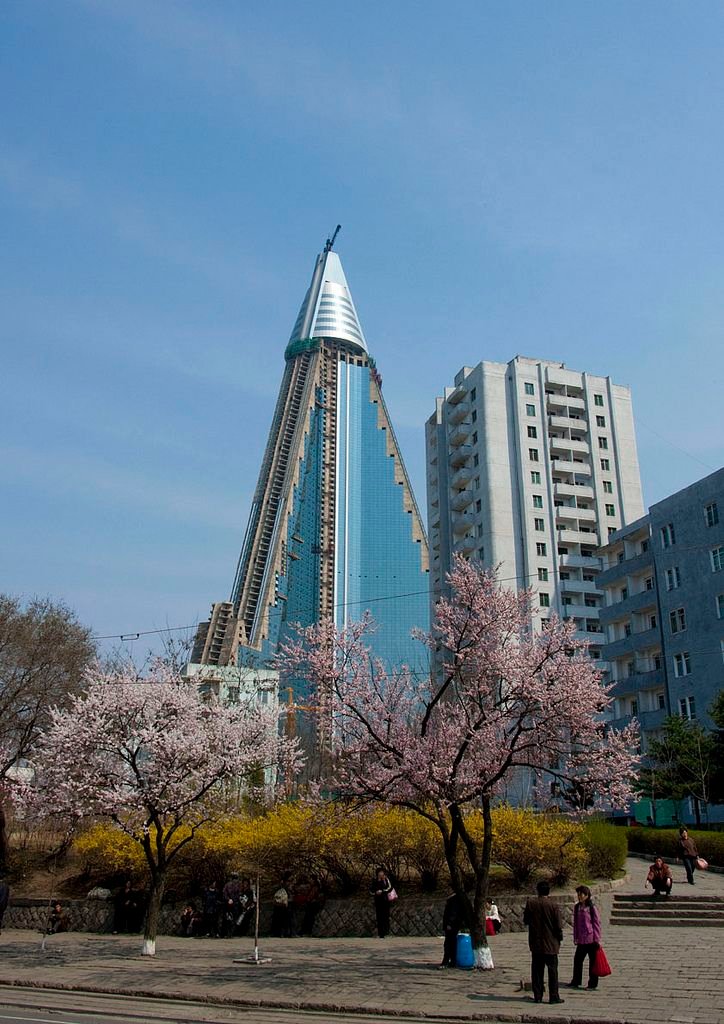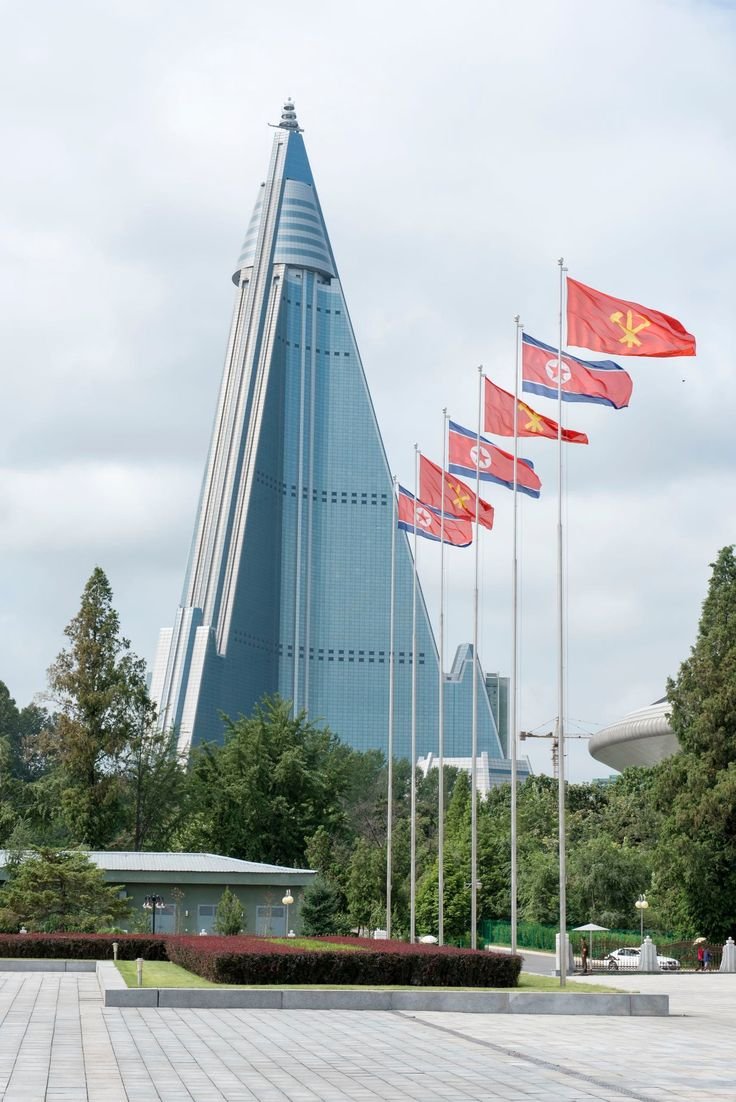North Korea
Welcome to North Korea
North Korea, officially known as the Democratic People’s Republic of Korea (DPRK), is one of the most secretive and enigmatic countries in the world. Established after World War II through Soviet occupation of the northern Korean Peninsula, it shares a long and rich history and cultural heritage with South Korea but has remained largely closed off from the outside world since its division in 1948.
The country is known for its unique political system, monumental architecture, and strict control over tourism and information. Visiting North Korea offers a rare glimpse into a society that operates very differently from most nations, where ancient traditions meet modern ideologies under the Juche philosophy, the state’s guiding principle. Travel here is unlike any other experience — tightly controlled, with tourists required to join government-sanctioned tours and adhere to strict itineraries. Photography is regulated, and interaction with locals is limited and supervised. Despite these restrictions, North Korea offers fascinating cultural immersion, historic sites, and natural beauty, from the capital Pyongyang’s grand monuments to the volcanic Baekdu Mountain and the demilitarized zone bordering South Korea.
1.
A Once-in-a-Life Adventure: Traveling to North Korea is the ultimate adventure travel experience. It is one of the world’s most unusual destinations, offering a unique opportunity to explore a society rarely accessible to outsiders. Tours cover iconic landmarks, remote regions, and cultural sites that reveal the country’s complex history and ideology.

2.
Cultural and Historical Insight: Visitors gain unprecedented insight into North Korea’s culture, history, and political system. From visiting museums and monuments dedicated to the Kim dynasty to witnessing traditional performances and local industries, travelers can deepen their understanding of this enigmatic nation beyond the headlines.

Planning Your Trip
Visa Information
Travel to North Korea requires a visa, which must be arranged through an approved tour operator. Independent travel is not permitted. Tour companies handle all visa applications and travel permits, ensuring compliance with DPRK regulations. Visitors must join organized tours and follow strict itineraries, with no freedom to explore independently.
Best Time to Visit
The best time to visit North Korea is during the spring and autumn when the weather is mild and pleasant. These seasons offer comfortable temperatures and clearer skies, ideal for sightseeing and outdoor activities. Summer can be hot and humid, while winter is cold and harsh, especially in northern and mountainous areas.
Getting To and Around
Most travelers enter North Korea via China, typically through Beijing or Dandong, where they cross the border by train or road. Some tours also start from Russia or China’s Jilin Province, especially for visits to the Rason Special Economic Zone in the northeast, a unique area with different economic policies and a more relaxed atmosphere.
Within North Korea, travel is by organized transport arranged by the tour operator, including buses and sometimes domestic flights. Independent travel is not allowed, and movement is restricted to approved destinations on the itinerary.

Accommodation
Accommodation in North Korea is state-run and generally basic but clean and functional. Most hotels are located in Pyongyang and other major tourist areas. In 2025, a major development has expanded lodging options significantly with the opening of the Wonsan-Kalma coastal tourist zone on the east coast.
Accommodation Options
This new resort spans a 4-kilometer stretch of beach and includes hotels, hostels, and guesthouses capable of accommodating around 20,000 visitors annually. The complex features a range of facilities such as restaurants, shopping centers, and recreational amenities like a water park. The resort is designed to offer a “world-class” experience according to North Korean state media, with the goal of boosting tourism and providing a modern leisure destination for domestic visitors initially, with hopes to attract foreign tourists in the future.
The Wonsan-Kalma resort is located about two hours by road from Pyongyang and is accessible via the newly inaugurated Kalma train station and a nearby airport with a long runway, capable of handling commercial flights. This development reflects the government’s ambition to transform Wonsan, a city with historical ties to the ruling elite, into a premier tourist destination.
While the resort is currently open to domestic tourists, it is expected that visitors from friendly countries, particularly Russia and China, may gain access as the tourism sector gradually reopens internationally.

Food and Drink
North Korean cuisine is characterized by simple, hearty dishes that emphasize local ingredients and traditional preparation methods. Meals often feature rice, noodles, kimchi (fermented vegetables), soups, and various meat and seafood dishes.
In Pyongyang and larger tourist sites, visitors can sample typical Korean dishes such as:
- Naengmyeon: Cold buckwheat noodles served in a tangy broth, a popular dish especially in summer.
- Bibimbap: A mixed rice dish with vegetables, meat, and chili paste.
- Pajeon: Savory pancakes made with green onions and sometimes seafood.
- Bulgogi: Marinated grilled beef, often served with rice and side dishes.
At the new Wonsan-Kalma resort, dining options include state-run restaurants and cafeterias offering a variety of local dishes alongside some international-style fare. The resort’s restaurants aim to provide a comfortable and modern dining experience, catering to the tastes of domestic tourists and, eventually, international visitors.
Alcoholic beverages commonly available include soju (a clear distilled spirit) and local beers. Tea, particularly green tea, is a staple drink throughout the country.
Visitors should note that food choices can be limited compared to international standards, and dietary restrictions may be difficult to accommodate. All meals during tours are typically arranged by the tour operator, and eating at independent establishments is not permitted.

Must-See Attractions
Wonsan-Kalma Coastal Tourist Zone
The newly opened Wonsan-Kalma beach resort on North Korea’s east coast is the country’s largest and most ambitious tourism project to date. Spanning over 600 acres along a 3.5-mile stretch of pristine beach, this sprawling resort is designed to accommodate up to 20,000 visitors. It features multiple hotels, restaurants, water parks, sports courts, and shopping centers. The resort was personally championed by leader Kim Jong Un, who envisions it as a “world-class” destination that will boost the domestic tourism industry and eventually welcome international visitors.
Located about two hours from Pyongyang by road, Wonsan-Kalma is accessible via a new airport with a long runway capable of handling commercial flights, alongside a modern train station. The area combines natural beauty with modern leisure facilities, including swimming pools, water slides, and performance theaters. While the resort currently primarily serves domestic tourists, it represents a major step toward opening North Korea’s tourism to the outside world.
Pyongyang’s Monumental Landmarks
The capital city, Pyongyang, is a showcase of monumental architecture and ideological symbolism. Key sites include:
- Kim Il-sung Square: A vast public square used for military parades and mass gatherings, surrounded by imposing government buildings.
- Tower of the Juche Idea: A towering monument dedicated to the Juche philosophy, North Korea’s guiding ideology of self-reliance.
- Arch of Triumph: Built to commemorate the Korean resistance against Japanese occupation, it is one of the largest triumphal arches in the world.
- Mansudae Grand Monument: Featuring massive bronze statues of Kim Il-sung and Kim Jong-il, this site is a focal point for visitors paying respects.
Demilitarized Zone (DMZ)
The DMZ is the heavily fortified border separating North and South Korea. Visiting this area offers a sobering glimpse into the ongoing division of the Korean Peninsula. Tourists can see observation posts, tunnels dug by the North, and the Joint Security Area where diplomatic talks have taken place. The DMZ is a powerful reminder of the peninsula’s turbulent history and the fragile peace.
Mount Paektu
Considered sacred in Korean culture, Mount Paektu is the highest peak on the Korean Peninsula and a volcanic mountain of great historical and mythological significance. The area offers breathtaking natural scenery, including crater lakes and dense forests. Although access is limited and tightly controlled, visiting Mount Paektu is a highlight for those interested in North Korea’s natural beauty and cultural heritage.
Rason Special Economic Zone
Located in the northeast, Rason is a unique area where North Korea experiments with economic reforms and foreign trade. It features a blend of industrial facilities, marketplaces, and seaside parks. Visitors to Rason can explore local industries, watch Taekwondo demonstrations, and enjoy scenic walks along the waterfront and Pipha Island. This zone operates differently from the rest of the country and offers a glimpse of North Korea’s attempts at economic modernization.

Must-Do Activities
Explore the Wonsan-Kalma Resort
At the Wonsan-Kalma coastal zone, visitors can enjoy a variety of leisure activities. Swimming in the Yellow Sea, relaxing on sandy beaches, and trying out water slides and pools at the resort’s water park are popular pastimes. Sports courts and recreational facilities provide options for tennis, basketball, and other games. Dining at the resort’s restaurants offers a chance to sample local cuisine in a modern setting. The resort’s shopping centers and entertainment venues add to the vibrant atmosphere, making it a comprehensive holiday destination.
Guided City Tours in Pyongyang
Tourists typically join guided tours that showcase Pyongyang’s highlights, including visits to museums, cultural centers, and monumental sites. Walking through Kim Il-sung Square, ascending the Tower of the Juche Idea for panoramic views, and visiting the Mansudae Art Studio to see North Korean art and crafts are enriching experiences. These tours provide deep insights into the country’s history, politics, and culture, all narrated by government-approved guides.
Attend Cultural Performances
North Korea is known for its elaborate cultural performances, which are often included in tour itineraries. Visitors may witness traditional Korean dance, music, and mass games—a spectacular display of synchronized gymnastics and choreography involving thousands of performers. These performances celebrate national pride and socialist ideals and offer a unique window into North Korean artistic expression.
Visit Historical and Revolutionary Sites
Exploring sites related to the Korean War and the revolutionary history of the Kim dynasty is a key part of the North Korean experience. Museums and memorials detail the country’s struggle against Japanese occupation and the Korean War. Visiting revolutionary sites, such as the birthplace of Kim Il-sung or the Revolutionary Martyrs’ Cemetery, provides context to the country’s political narrative.
Experience the DMZ and Panmunjom
A visit to the DMZ includes seeing the Joint Security Area at Panmunjom, where visitors can stand in the conference rooms that straddle the border between North and South Korea. This area offers a rare chance to witness the tense but carefully managed interaction between the two Koreas. Walking along the border and viewing military installations highlights the ongoing geopolitical complexities.
Explore the Natural Beauty of Mount Myohyang
Mount Myohyang, known for its scenic beauty and cultural sites, is another must-visit destination. The area features ancient temples, such as the Pohyon Temple, and the International Friendship Exhibition, which houses gifts presented to the Kim family by foreign dignitaries. Hiking trails offer stunning views of the surrounding mountains and forests.
Visit Local Markets and Cooperatives
While interaction with locals is limited and supervised, some tours include visits to cooperative farms and local markets. These visits provide a glimpse into everyday life and North Korea’s agricultural practices. Observing local craftspeople and farmers at work enriches the understanding of the country beyond its political image.

Travel Tips
Traveling to North Korea in 2025 offers a unique and highly controlled experience unlike any other destination in the world. To make the most of your trip while ensuring your safety and respecting local customs, it is essential to be well-prepared and informed. This guide covers important travel tips including safety advice, local customs, and basic language essentials to help you navigate your journey smoothly.
Safety Advice
North Korea is one of the most tightly regulated countries globally, and travel there is subject to strict government controls. The foremost safety advice is to follow all instructions from your official guides and government authorities meticulously. Your guides are responsible for your itinerary and conduct, and any deviation from the rules can lead to serious consequences, including detention.
- Do Not Travel Independently: Independent travel is not permitted. You must be part of an organized tour with government-approved guides at all times. Wandering off or attempting to explore on your own is strictly forbidden and can result in severe penalties.
- Respect Photography Rules: Always ask your guide’s permission before taking photos. Photography is heavily restricted, especially around military sites, government buildings, and local people. Avoid photographing anything that could be considered sensitive, such as soldiers, military installations, poverty, or construction sites. Taking unauthorized photos can cause serious trouble.
- Carry Identification: Always carry your passport and tour documents. Police and security checkpoints are common, and you may be asked for identification at any time. Comply calmly and promptly with any requests from security personnel.
- Avoid Political Discussions: Do not criticize the government, leadership, or political system. Discussions or actions perceived as disrespectful or subversive can lead to arrest. Avoid spreading or possessing any materials that could be seen as propaganda against the state, including South Korean media or religious literature.
- Be Mindful of Surveillance: Your movements, communications, and belongings may be monitored or searched. Electronic devices such as smartphones, cameras, and laptops are subject to inspection. Ensure that no prohibited content is stored on your devices before entering the country.
- Health Precautions: Medical facilities are limited, especially outside Pyongyang. Bring any necessary medications with you, and consider travel insurance that covers medical evacuation. Drink bottled or boiled water and avoid raw or street food to minimize health risks.
- Travel During Daylight: Road conditions outside major cities can be hazardous, and street lighting is often poor. Travel is usually arranged by your tour operator during daylight hours for safety.
- No Driving Privileges: Foreigners are not allowed to drive in North Korea. All transportation is arranged by your tour company, usually by bus or train.
- Be Prepared for Limited Consular Support: Many countries do not have embassies in North Korea. In case of emergencies, consular assistance is limited and may be delayed, so it is crucial to avoid any behavior that could jeopardize your safety.
Local Customs
Understanding and respecting North Korean customs is vital to ensure a respectful and trouble-free visit. The culture is deeply influenced by Confucian values, socialist ideology, and a strong sense of national pride.
- Greetings and Respect: Bowing is the traditional form of greeting. A slight bow shows politeness, while a deeper bow indicates greater respect. When meeting your guides or locals, a polite bow is appreciated.
- Dress Code: Dress conservatively and neatly. Men should wear collared shirts and long trousers, while women should opt for modest dresses or skirts. Avoid casual clothing such as shorts, tank tops, or sportswear, which may be seen as disrespectful.
- Respect for Leaders: Showing respect to images and statues of the Kim family is mandatory. Visitors are expected to bow when passing or photographing statues of Kim Il-sung and Kim Jong-il. Disrespecting these symbols is a serious offense.
- Shoes Off Indoors: It is customary to remove your shoes when entering certain buildings, especially homes, temples, or places of historical interest. Follow your guide’s lead on this.
- Gift Giving: While tipping is not customary, small gifts can be appreciated. Suitable gifts include cigarettes for male guides or chocolates for female guides. Avoid giving books, magazines, or any media from outside the country, as these can cause problems.
- Behavior in Public: Public displays of affection are frowned upon. Maintain a polite and reserved demeanor in public spaces. Loud talking, arguing, or confrontational behavior should be avoided.
- Interaction with Locals: Interaction with North Koreans is limited and supervised. Do not initiate conversations about politics or sensitive topics. Photographing locals without permission is prohibited.
- Photography Etiquette: Always ask before taking photos of people or places. Avoid close-up shots of statues or monuments; instead, capture the entire figure. Never photograph military personnel except in designated areas like the DMZ.
Language Basics
The official language of North Korea is Korean, with some differences in vocabulary and pronunciation compared to South Korean Korean. While your guides will speak English, learning a few basic Korean phrases can enhance your experience and show respect to your hosts.
Here are some useful Korean phrases:
- Hello: 안녕하세요 (Annyeonghaseyo)
- Thank you: 감사합니다 (Gamsahamnida)
- Yes: 네 (Ne)
- No: 아니요 (Aniyo)
- Please: 제발 (Jebal)
- Excuse me / Sorry: 죄송합니다 (Joesonghamnida)
- Goodbye: 안녕히 가세요 (Annyeonghi gaseyo) when someone is leaving; 안녕히 계세요 (Annyeonghi gyeseyo) when you are leaving
- How much?: 얼마에요? (Eolmaeyo?)
- Bathroom: 화장실 (Hwajangsil)
- Help: 도와주세요 (Dowajuseyo)
Using these phrases politely will be appreciated and can help build goodwill with your guides and hosts.
Final Thoughts
Additional Practical Tips
- Pack Light and Smart: Power outages can occur, so bring a small flashlight or headlamp. Electrical outlets accept types A and C plugs with 120 or 220 volts, 60Hz. Bring necessary chargers and adapters.
- Electronic Devices: Bring only essential electronics. Devices with GPS, satellite phones, or large lenses are discouraged. Be prepared for limited or no internet access and restricted mobile phone coverage.
- Money: The official currency is the North Korean won, but foreign visitors typically use euros, Chinese yuan, or US dollars for transactions arranged by tour operators. Cash is preferred as credit cards are not accepted.
- Respect the Itinerary: Stick strictly to your tour schedule. Do not attempt to deviate or explore on your own. Your guides will manage all logistics and permissions.
- Stay Calm and Polite: If questioned by authorities or security personnel, remain calm, polite, and cooperative. Avoid confrontations or arguments.
Traveling to North Korea demands careful preparation, cultural sensitivity, and strict adherence to local laws and customs. While the country offers a fascinating glimpse into a unique society, the risks associated with non-compliance are significant. By respecting the rules, being mindful of cultural norms, and maintaining a respectful attitude, visitors can enjoy a safe and memorable journey into one of the world’s most secretive nations.

